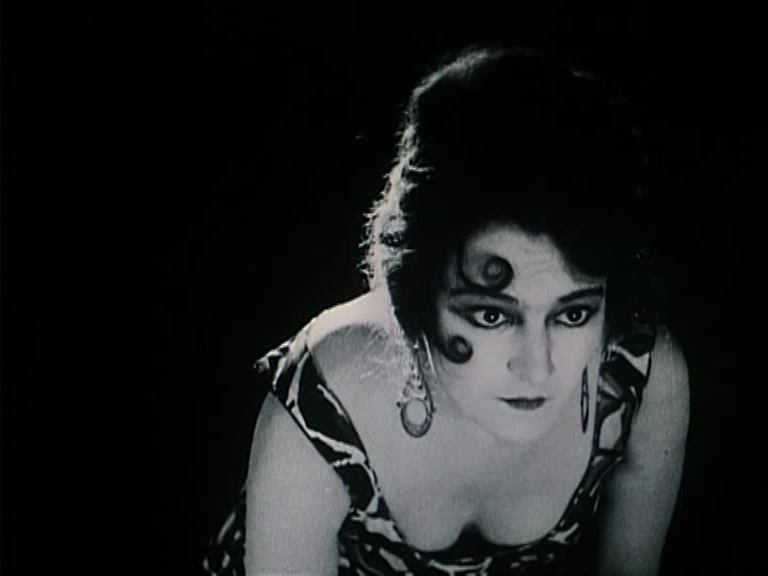
Marcel L’Herbier
France – 1921

Screenplay: Marcel L’Herbier
Cinematography: Georges Lucas Georges Specht
Production: Gaumont Série Pax Société des Etablissements L. Gaumont
Language: French
Duration: 74 min
Color: Black and White
Synopsis: In Granada, Spain, Sibilla dances in a squalid cabaret called El Dorado, struggling to earn enough to care for her sick child. The boy’s father Estoria, a prominent citizen, refuses them both help and recognition, fearful of jeopardizing the engagement of his adult daughter Iliana to a wealthy nobleman. Iliana however slips away from her engagement party to meet her real lover Hedwick, a Swedish painter. Sibilla, in desperation after a further rejection by Estoria, sees an opportunity to blackmail him by locking the lovers overnight in their meeting-place in the Alhambra. Unaware of Sibilla’s deceit, the next day the young lovers decide to elope together and propose to take with them Sibilla’s son—Iliana’s half-brother—so that the boy can be properly cared for in a healthy climate. She reluctantly agrees, and returns to her empty room at El Dorado where Joao, the cabaret’s clown, tries to force himself upon her. Knowing that she will not see her son again, she performs a last dance on stage to rapturous applause before going backstage to end herself at the point of a dagger.
Notes:
Between 1919 and 1922, L’Herbier made six films for Gaumont, several in their Série Pax, and three of these stood out as major achievements of his period in silent films. He adapted a story by Balzac for L’Homme du large (1920), set and filmed on the Brittany coast. More ambitious was El Dorado (1921), a grand and visually spectacular melodrama filmed on location in Andalusia; it was noted for its visual experiments with dissolves and blurred (flous) images. Music was another ongoing interest of L’Herbier’s during the silent era and he tried to incorporate it into his films whenever financially possible. On more than one occasion he spoke about film’s ‘musicality,’ and El Dorado was one of the first French films to benefit from an original, synchronous, symphonic score by Marius-François Gaillard.
Central to Marcel L’Herbier’s work as a filmmaker was the concept of cinema as a synthesis of all the art forms, which he termed cinéma total, or ‘total cinema’. An aesthete who was passionate about art, music, literature and theatre, L’Herbier understood the importance of film artistry, from sets, photography and lighting to costume. His films spanned 1918 to 1952, and through them there ran an emphasis on costume and clothing. The role of costume in L’Herbier’s films of the silent years is especially important, considered by many to be his most creative perior along with films from the early 1930s, in which he continued to deploy contemporary fashion in significant ways. Among them, we find Le Parfum de la dame en noir (Scent of the Woman in Black, 1931), L’Argent (Money, 1928), Le Vertige (The Living Image, 1926), L’Inhumaine (The Inhuman Woman, 1924), and Le Carnaval des Vérités (Carnival of Truths, 1919).
Excerpt drawn from Evans, E.B.C. and Uhlirova, M. Marcel L’Herbier: Dossier.


